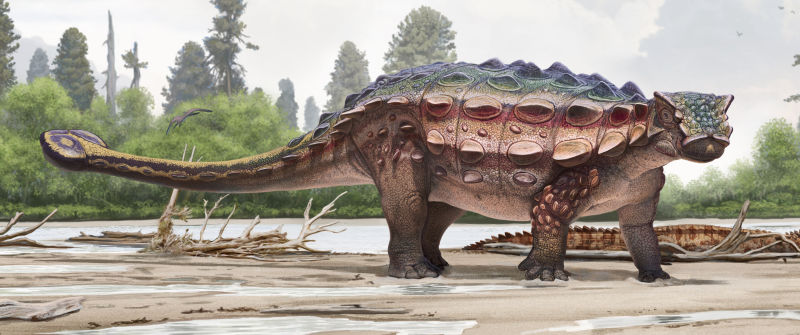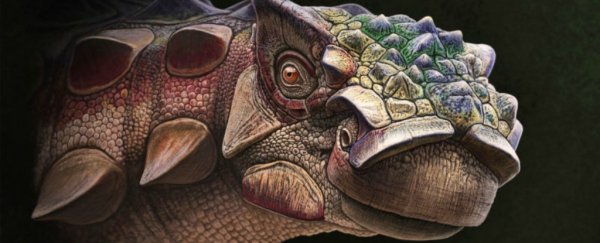Back in 2008, researchers found a weird set of dinosaur fossils in the Grand Staircase-Escalante National Monument in southern Utah.
Most ankylosaurid dinosaurs found in the area have smooth bony armour on their skull. This one was spiky.
After 10 years of hard work the research has just been published, confirming this weird spike-armoured oddity is, in fact, a whole new genus of dinosaur, currently represented by one species - Akainacephalus johnsoni.
Ankylosaurids are a family of armoured dinosaurs that lived during the Cretaceous period, between 100 and 66 million years ago. Most of these animals were herbivores, and would spend their days plodding around, at times possibly head-butting each other with their armoured heads.
There are lots of different types of ankylosaurids, but most of the ones from western North America during the Late Cretaceous had smooth bony armour on their heads.
Since their 76 million-year-old finding had a spiky head instead, the researchers immediately figured it might not be quite the same as the others - but it took some detective work to properly determine its place in the family tree.
And that place was quite surprising.
Instead of being related to ankylosaurids found in western North America, the team found that A. johnsoni was more closely related to Asian ankylosaurids, such as Saichania and Tarchia.
"A reasonable hypothesis would be that ankylosaurids from Utah are related to those found elsewhere in western North America, so we were really surprised to discover that Akainacephalus was so closely related to species from Asia," said Curator of Paleontology from the Natural History Museum of Utah, Randall Irmis.
 (Andrey Atuchin and the Denver Museum of Nature & Science)
(Andrey Atuchin and the Denver Museum of Nature & Science)
This means there were potentially at least two immigration events during the Late Cretaceous period - it's how A. johnsoni and a close relative Nodocephalosaurus ended up in America, having wandered across a land bridge from Asia.
"It is always exciting to name a new fossil taxon, but it is equally exciting if that taxon also provides additional insights into the bigger picture of its life, such as its diet or aspects of its behaviour, and the environment it lived in," said first author Jelle Wiersma.
"Not only is this the first described and named Late Cretaceous ankylosaurid dinosaur from Utah, but this unique animal also strengthens the evidence that distinct northern and southern provincialism existed during the late Campanian stage in Laramidia."
The skeleton is the most complete ankylosaurid from the Late Cretaceous from the area. It includes a complete skull, a number of vertebrae, a complete tail club and even some parts of the front and hind limbs.
"It is extremely fascinating and important for the science of paleontology that we can read so much information from the fossil record, allowing us to better understand extinct organisms and the ecosystems they were a part of," added Wiersma.
The research has been published in PeerJ.
